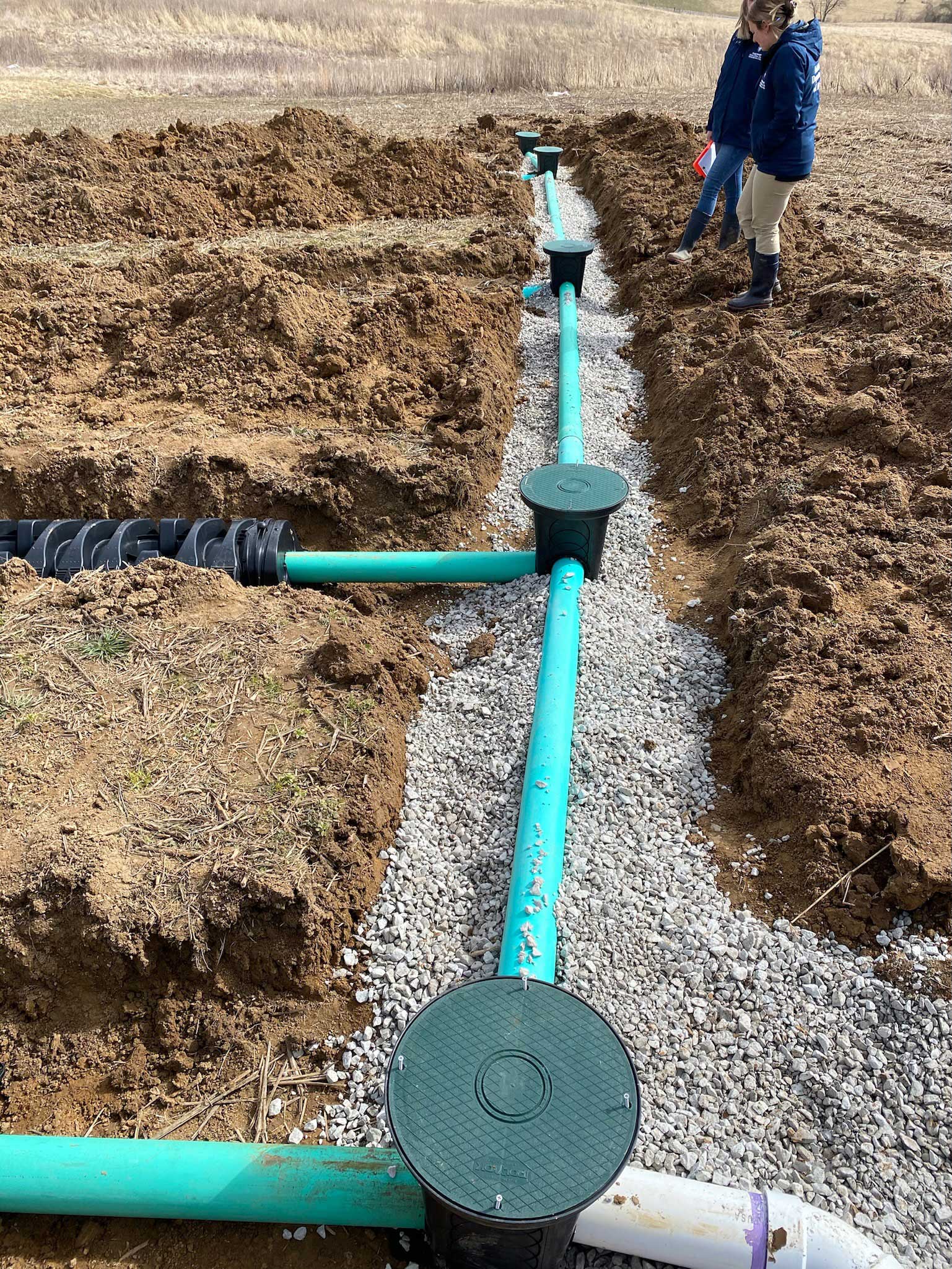Specialist Septic Ohio - Trusted Septic System Professionals in Ohio
Specialist Septic Ohio - Trusted Septic System Professionals in Ohio
Blog Article
Unveiling the Art of Excavation: Pro Tips for Safe and Efficient Digging
In the world of excavation, the proficiency of risk-free and efficient digging is an art form that requires expertise, precision, and adherence to recognized techniques. As dirt is turned and earth is moved, the intricacies of excavation disclose themselves, demanding a keen understanding of tools, dirt structure, safety procedures, and ecological considerations. The know-how required to navigate these components successfully can imply the distinction in between an effective excavation job and a potential catastrophe. By deciphering the layers of this complex procedure, a world of insights and techniques awaits those looking for to elevate their excavation abilities to brand-new elevations.
Significance of Appropriate Tools
To ensure the safety and security and efficiency of any type of excavation task, making use of the appropriate tools is vital. Excavation projects differ in scope and intricacy, ranging from small property landscaping work to large-scale building undertakings.
These versatile devices come in different dimensions to fit different job demands. Miniature excavators are ideal for smaller sized tasks, while bigger excavators deal with more extensive projects successfully.
Apart from excavators, various other essential devices consists of dump vehicles, plates, and bulldozers. Dump trucks are important for removing and moving excavated materials, while trenchers are utilized for digging narrow and deep trenches. Bulldozers master tasks that require pushing large amounts of soil or particles. By buying the appropriate equipment, excavation jobs can be finished securely, promptly, and with accuracy.
Understanding Dirt Make-up
A comprehensive understanding of dirt composition is fundamental for executing excavation tasks with precision and safety. Recognizing the various kinds of soil is critical as it directly influences excavation methods, equipment choice, and overall project performance. Dirt composition typically consists of 4 major parts: sand, silt, clay, and natural issue. Each component has special residential properties that affect just how dirt responds to excavation procedures.
Silt bits are smaller than sand but larger than clay, supplying moderate water drainage and cohesion. Organic issue, such as decomposing plant material, influences soil fertility and security.
Before starting excavation, conducting dirt tests to identify its structure and qualities is essential. This details assists in choosing the ideal equipment, carrying out precaution, and establishing excavation methods customized to the specific soil conditions - lancaster trenching. By understanding dirt make-up, excavation professionals can boost project results while making sure safety and adherence to finest practices
Precaution and Methods
Comprehending soil structure is the foundation whereupon precaution and protocols for excavation jobs are built, making sure the well-being of employees and the success of the endeavor. There are a number of key measures that should be carried out to alleviate dangers and prevent accidents. when it comes to security throughout excavation.
Most importantly, before any digging commences, a complete assessment of the website should be carried out to recognize any potential dangers such as below ground energies, unsteady dirt problems, or close-by structures that might posture a threat. It is crucial to have a proficient person manage the excavation process to make certain that all security protocols are followed purely.
Furthermore, all workers involved in the excavation has to be effectively trained in safe digging techniques and the appropriate procedure of equipment. By adhering to these safety and security actions and methods, excavation jobs can be finished successfully and without incident.
Efficient Excavation Preparation
When embarking on an excavation task, precise preparation is necessary to make sure performance, safety and security, and effective results. Reliable excavation planning entails numerous key steps that are crucial for the smooth execution of the task. The initial step is to perform a complete website assessment to identify any potential risks, such as below ground utilities or unstable soil conditions. This details is important for developing an in-depth excavation plan that includes safety and security procedures and risk reduction strategies.
As soon as the website assessment is total, the following action is to develop a clear timeline and schedule for the excavation see here activities. This includes identifying the sequence of tasks, tools requirements, and manpower allocation. Appropriate scheduling assists stay clear of delays and guarantees that the job remains on track.

In addition, interaction among all staff member is vital throughout the preparation phase. Clear regulations, routine updates, and efficient coordination are important for an effective excavation job. By investing effort and time in thorough preparation, excavation teams can considerably improve productivity, minimize dangers, and achieve successful results.

Handling Ecological Factors To Consider
With boosting emphasis on ecological sustainability in construction methods, managing ecological factors to consider has become an essential aspect of excavation tasks. Excavation activities have the prospective to affect the surrounding setting through dirt erosion, sediment drainage, environment disruption, and contamination of water resources. To reduce these risks, it is necessary to apply finest techniques that focus on environmental management.

Additionally, appropriate waste management is critical to stop dirt and water contamination. Implementing procedures for the disposal of harmful materials, recycling of waste materials, and lessening using unsafe chemicals can dramatically decrease the ecological influence of excavation jobs. By integrating these techniques right into excavation planning and implementation, construction business can make certain that their jobs are not just risk-free and productive but likewise ecologically liable.
Final Thought
In conclusion, understanding the art of excavation requires a comprehensive understanding of correct devices, dirt make-up, safety and security measures, and reliable planning. By adhering to these guidelines and taking into consideration environmental variables, excavations can be conducted safely and successfully. It is critical to prioritize safety and productivity in every excavating project to make certain successful end results.
As dirt is turned and planet is relocated, the complexities of excavation disclose themselves, requiring an eager understanding of you can find out more equipment, dirt composition, safety and security procedures, and ecological factors to consider.To guarantee the safety and performance of any excavation task, utilizing the proper tools is vital.An extensive understanding of dirt composition is basic for performing excavation tasks with precision and security. Comprehending the various kinds of soil is crucial as it straight affects excavation approaches, equipment choice, and overall project efficiency. By understanding dirt structure, excavation specialists can enhance project end results while making sure safety and adherence to ideal techniques.
Report this page